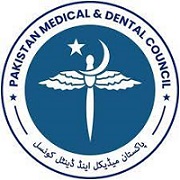NON-OBSTETRICAL VAGINAL TRAUMA: CAUSES AND COMPLICATIONS
Abstract
Non-Obstetrical vaginal trauma in a common occurrence but is under reported. It is commonly related to coital trauma but may also be a consequence of direct penetrating trauma. automobile accident and post menopausal atrophy. All these injuries may range from minor vaginal laceration to life threatening hemorrhage. The peculiar thing about these injuries is marked delay in seeking professional help as a patient perceives it as a social stigma. History may be miss- leading, with resistance in examination .under estimation of blood loss leading to erroneous diagnosis and hence delayed prompt treatment.
Objective; Our study intends to the report the relative contribution of various causes leading to non-Obstetrical vaginal trauma with its resultant morbidity and mortality amongst patient managed in its tertiary care hospital and two private hospital during the study period.
Material & Methods: It was descriptive study from 1st July 2015 to 30 June 2016 at Lahore general hospital which is a teaching hospital attached to Ameer ud din medical collage and post graduate medical institute. Researchers also included cases managed in two private hospitals. All cases with suspicion of sexual assault and medicoligal involvement were excluded. These patients underwent examination under anesthesia for exact anatomical location of injury, any collateral damage and primary definite surgical repair along with blood transfusion. They were advised to come for follow up six weeks latter.
Results: Collectively 40 patients of non-Obstetrical vaginal trauma were managed as emergency cases majority 34 cases (85 %) were due to coital trauma and six cases (15%) due to non-coital trauma, commonest mode of presentation was vaginal bleed with varying degree of shock 28 cases (70 %), bilateral valval hematoma four cases (10 %), fecal incontinence from 4th degree perinea tear two cases (05%), urinary incontinence one case (2.5 %) and urinary retention one case (2.5 %). Blood transfusions were required in 37 causes ranging from 02 to 12 units of blood. Transfusion reaction developed in four cases (10.8 %), sepsis in two cases (5.4 %), acute renal failure necessitating dialysis in one case (2.7 %). One patient died of hemorrhagic shocked. Only 11 cases reported for follow up visit, 06 had depression, 03 deep dysparenia and two vaginismus. Rest were lost to follow up.
Conclusion: Our study concluded that the most common cause of non-obstetrical vaginal trauma is coital injury sustained at consummation of marriage. Although majority recovered well yet its prevention poses a great challenge to the gynecologist community.






